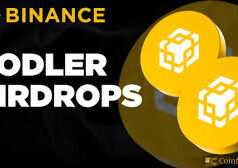Cryptocurrency chatter moves fast, and yet, amid the buzz, actual signal can be hard to pick out from noise. So, with that in mind, here’s a plainspoken, sourced rundown of the most recent developments around three airdrops that have dominated community threads lately: Cashmere, Ink, and Soneium. I’ll explain recent project moves, key public signals, and the broader implications — but I won’t tell you how to claim anything. Instead, I’ll focus on what each update suggests for the project and the ecosystem.
Cashmere: Where the whispers meet reality
First of all, Cashmere has been positioned as a cross-chain tooling effort with a focus on MEV protection and smoother swaps. Over time, the team has run testnets and snapshots, and community trackers have been cataloguing those snapshots closely. Importantly, Cashmere has not publicly launched an official native token yet, and the airdrop narrative remains conditional: early testnet activity and prior snapshots are being treated by many trackers as potential indicators rather than guarantees. (Bitget Wallet)
Moreover, though various airdrop pages and bounty trackers list Cashmere activity logs and “how-to” style guides, these largely reflect community-collected snapshots of testnet participation and are not official token-distribution announcements. In other words, while some services recorded a snapshot as far back as February 28, 2024, the core truth is simple: the team would need to announce a token and distribution plan before anything becomes definitive. (CoinMooner)
Taken together, these signals imply a cautious posture. On one hand, testnet snapshots and ongoing developer activity suggest the project is alive and architecturally meaningful; on the other hand, there is no firm token distribution timetable from the team. Therefore, expectations should be calibrated accordingly.
Ink: institutional backing, clearer timelines
Next up, Ink — a Layer-2 / DeFi-focused network that has drawn attention both because of its technology choices and because the team and ecosystem have been more forthcoming with signals. Notably, several reputable write-ups and academy posts reported that an INK incentives token has been announced and that community-facing timelines (including smart contract audits and eligibility sweeps) were being discussed publicly with a view toward Q3/Q4 2025 windows. In short, Ink has stronger public-facing indicators that a token distribution is planned. (Bitget Wallet)
That said, there’s nuance: public reporting shows that the distribution is expected to focus on real users of the network—builders, liquidity providers, and people who engage meaningfully with Ink’s DeFi primitives—rather than pure “airdrop hunters.” Consequently, the program design appears to tilt toward incentives that cultivate long-term engagement rather than one-off claims. This framing, across multiple analyses, signals a preference for sustainable network growth over short-term user acquisition. (airdrops.com)
In other words, the immediate impression is that Ink’s approach is more structured and transparent than many projects that only whisper about airdrops. The implication is that, if an INK distribution occurs, it will likely be accompanied by technical milestones and publicly verifiable audit results.
Sources just above: project academy posts and analytical coverage that reference an announced incentives token and expected timing. (Bitget Wallet)
Soneium: corporate signals and ecosystem plays
Finally, Soneium — which has been associated with a corporate-backed Layer-2 narrative and a set of user-engagement campaigns. Unlike Cashmere’s tentative status, Soneium has been fairly active in terms of on-chain events, community gamification (treasure hunts, score seasons), and ecosystem launches. Public project pages and news posts catalog a sequence of events and reward programs aimed at bootstrapping activity on the Soneium L2. (soneium.org)
However, that vibrancy doesn’t automatically translate into a single clear airdrop mechanic. Instead, the ecosystem has layered multiple reward channels—NFT quests, swaps, bridge usage and seasonal “score” systems—that collectively constitute a tokenomics sandbox. Several trackers and guides have captured these events and have treated them as part of a broader retroactive rewards program or “retrodrop” architecture. Thus, Soneium’s public behavior suggests a more orchestrated ecosystem incentive model. (airdrops.io)
So, the key takeaway is that Soneium looks to be building an environment that can support varied distributions tied to platform engagement metrics—meaning that public activity and product launches are the primary signals to watch.
Sources just above: Soneium’s official site and ecosystem trackers documenting reward seasons and public activities. (soneium.org)
Cross-cutting reading: what the patterns imply
Firstly, and crucially, all three projects demonstrate that airdrops today are rarely random. Instead, they are becoming tools of economic design: structured, retrospective, and often tied to measurable utility. Secondly, project transparency varies: Ink sits closer to a conventional, scheduled announcement model, Soneium looks ecosystem- and campaign-driven, and Cashmere remains speculative absent an official token launch. Therefore, reading between the lines of snapshots, developer updates, and audit notices gives a far clearer picture than rumor alone. (Bitget Wallet)
Furthermore, the broader industry trend is evident: teams are trying to avoid one-off dispersion of tokens that don’t incentivize product adoption. Instead, they favor reward structures that align contributors, builders, and long-term users. Consequently, community signals that emphasize sustained activity—developer contributions, protocol usage, liquidity provision—are likely to be more meaningful when assessing retroactive reward potential.
Practical framing (without instructions)
In plain terms: look for official announcements, audit completions, and public snapshots posted by projects. For Cashmere, treat early testnet snapshots as speculative signals. For Ink, weigh the public timelines and audit signals as stronger evidence. For Soneium, watch for ecosystem campaigns and season-based reward mechanics that may later map to token distributions. These are the factors that shape credible expectations.
Closing thoughts: the landscape ahead
To wrap up, these three airdrop narratives illustrate a maturing market. Whereas earlier airdrops sometimes felt like marketing stunts, current distributions trend toward rewarding measurable, product-oriented contributions. For readers, that changes how communities should interpret project activity: steady engineering progress and clear public disclosures matter more than social media hype.
Sources:
- Cashmere project pages and airdrop trackers indicating testnet snapshots and conditional token expectations. (Bitget Wallet)
- CoinMooner and AirdropAlert pages that archive Cashmere testnet snapshots and community-collected signals. (CoinMooner)
- Ink Foundation / academy-style writeups and analysis covering the announced INK incentives token and expected timelines. (Bitget Wallet)
- Analytical coverage and recaps that synthesize Ink’s incentive structure and community orientation. (oakresearch.io)
- Soneium official site, ecosystem announcements, and airdrop/retrodrop archives documenting seasonal engagement and community campaigns. (soneium.org)



























